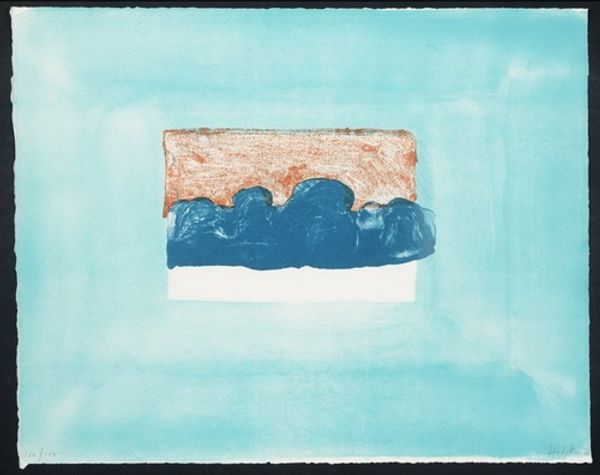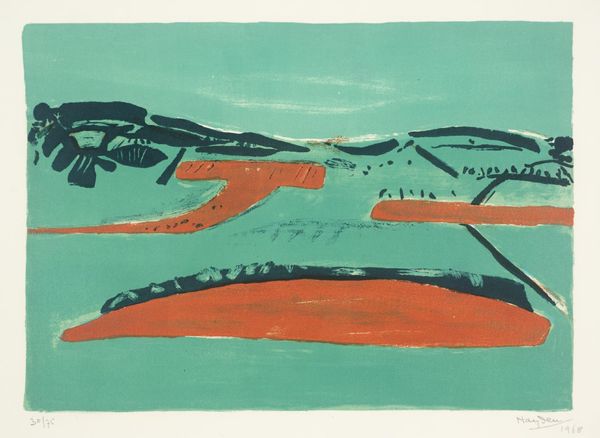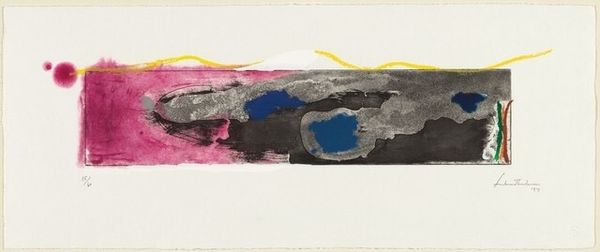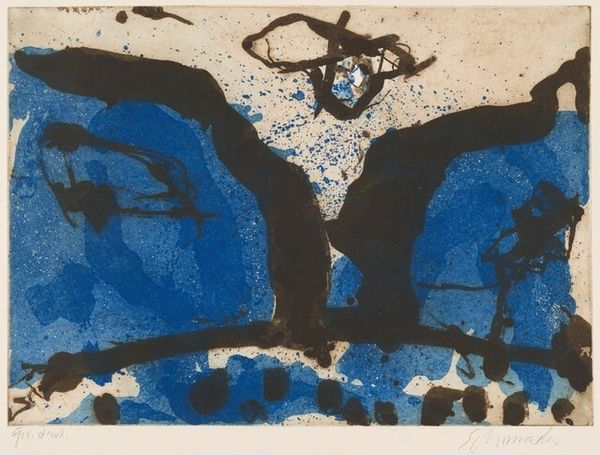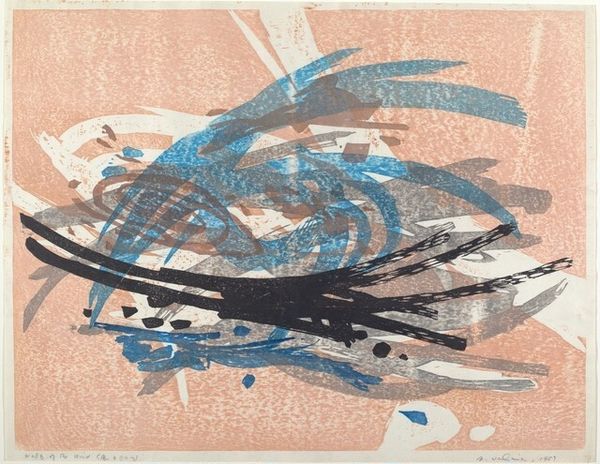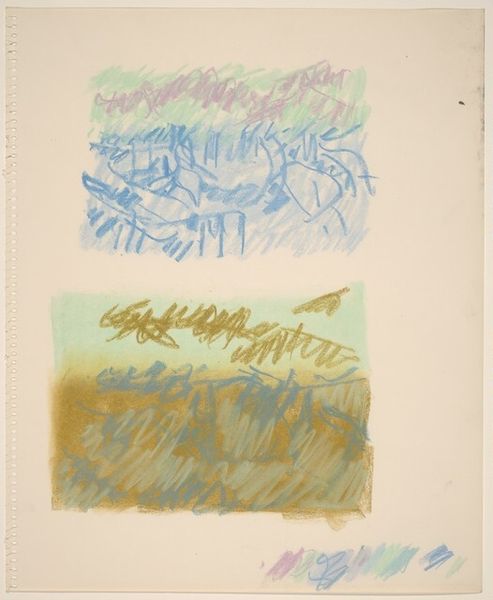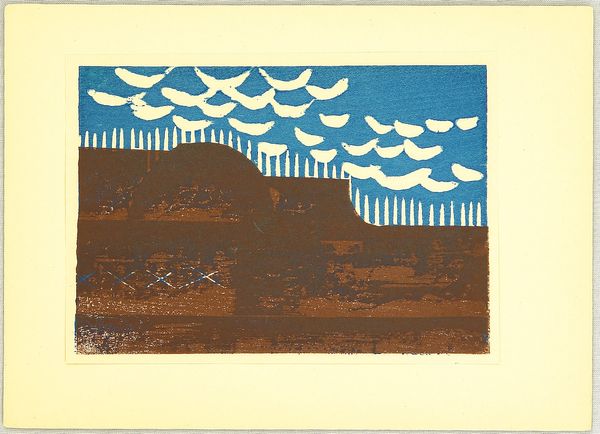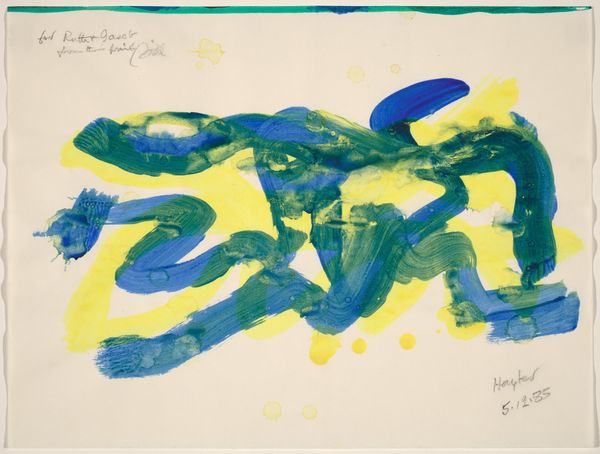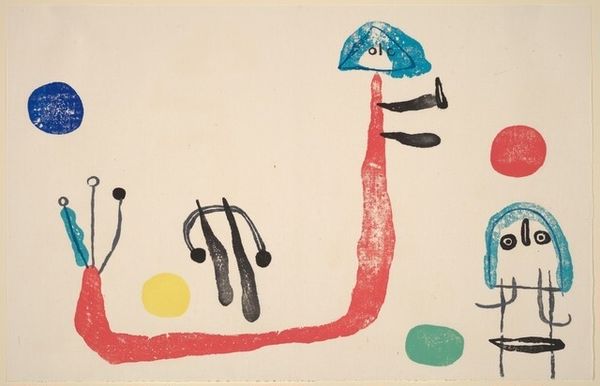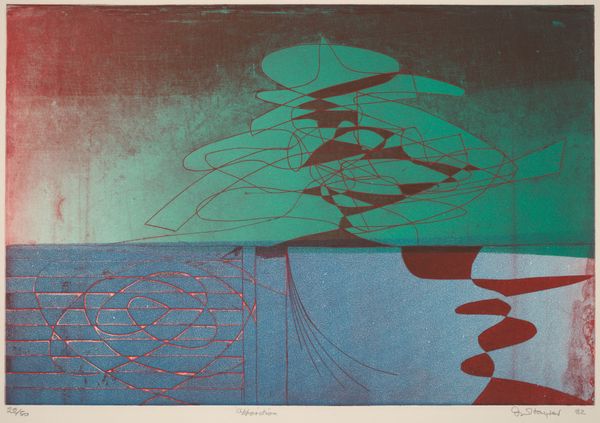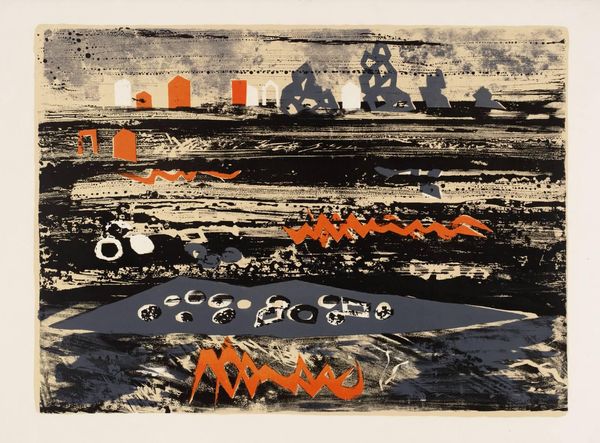
drawing, watercolor
#
drawing
#
water colours
#
watercolor
#
geometric
#
abstraction
#
line
#
modernism
#
watercolor
Dimensions: overall: 48.2 x 63.9 cm (19 x 25 3/16 in.)
Copyright: National Gallery of Art: CC0 1.0
Curator: Here we have Jacob Kainen's 1973 watercolor, "Night Wanderer." Editor: My first impression is one of a serene, almost watery landscape. The dominant blues and gentle, flowing lines suggest a quiet journey. Curator: Kainen, who worked as a print curator himself, was deeply influenced by the modernist movements of his time. Abstraction became his primary mode of expression, but always with a keen awareness of social issues. It's interesting to note the cultural shift in the 70's away from overt political art and towards more internal, subjective landscapes. Editor: I see that in his method—look at how Kainen has exploited the fluidity of the watercolor to its fullest! The way the pigments bleed and mingle speaks volumes about the process. He is not interested in controlling everything, he instead is allowing for the material’s inherent qualities to emerge. Curator: Exactly! This "loosening" in the art world mirrors similar changes occurring within larger societal structures; as systems of power shifted, so did creative ones, reflecting anxieties about industrialization, the rise of corporate dominance, and the individual's place within that shifting environment. Editor: Note the material choice; using watercolor rather than oil suggests, perhaps, the readily accessible, a move away from elite materials. This shift challenges traditional artistic hierarchies that separated "high" art from more everyday practices. It invites the viewer to contemplate the labor and materials, recognizing their intrinsic worth, isn’t it? Curator: I think the move towards these accessible media reflected a desire to make art more inclusive. Kainen worked through his career in public service and wanted people to understand art as both an everyday process and something for everyone. Editor: His choice is also a nod toward the integration of fine art and craft, elevating materials like watercolor in ways that contest traditional distinctions within art. This encourages viewers to acknowledge the skill in something readily accessible. It's all there within the work itself. Curator: By embracing abstraction, Kainen encouraged personal interpretation. We’re asked to find meaning in the visual elements rather than relying on direct representation, and that freedom is politically charged in its own right. Editor: I agree. What seems simple is actually a sophisticated meditation on materials, labor, and the role of the artwork in the context of a shifting cultural landscape. Curator: Thank you, that adds so much depth to how we might understand Kainen’s artistic and social vision!
Comments
No comments
Be the first to comment and join the conversation on the ultimate creative platform.
